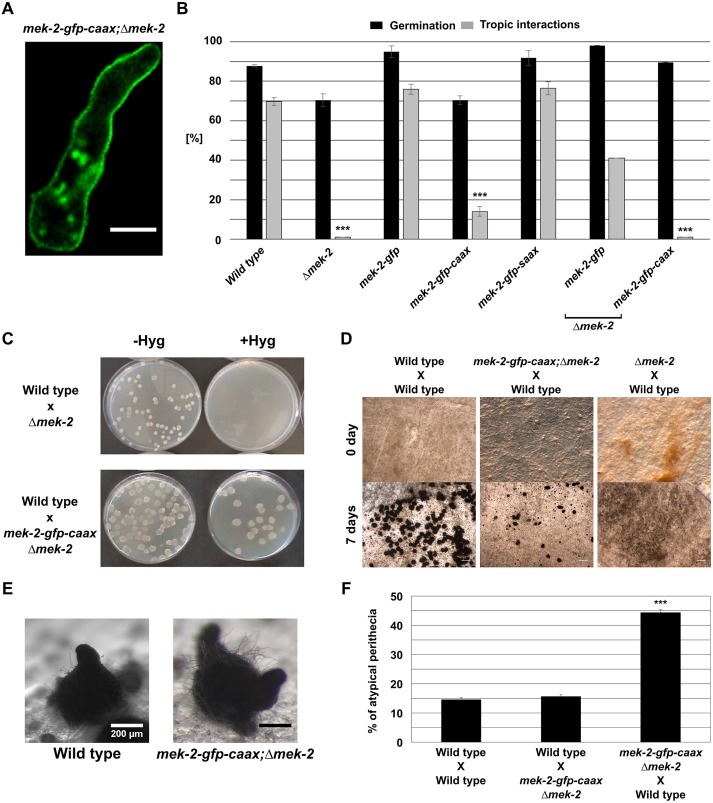Fig. 3.
Membrane-tethered MEK-2 partially complements the developmental defects of the Δmek-2 mutant. (A) The C-terminal fusion of a CAAX box domain to MEK-2 induces membrane tethering of the protein. Comparable observations were made for multiple samples (n=15). (B) Quantification of tropic interactions and germination of the following strains: wild type (FGSC 2489), Δmek-2, 406 (his3::Ptef-1–mek-2–gfp), 330 (his3::Ptef-1–mek-2–gfp–caax), 549 (his3::Ptef-1–mek-2–gfp–saax), 423 (mek-2::hph;his3::Ptef-1–mek-2–gfp) and 618 (mek-2::hph;his3::Ptef-1–mek-2–gfp–caax). Results are means±s.d. (n≈100). ***P<0.01 (compared with wild type). (C) Viability test of progeny from the crosses. Progeny carrying the Δmek-2 mutation is hygromycin (Hyg) resistant but inviable. The presence of MEK-2–GFP–CAAX in strain 279 (mek-2::hph;his3::Pmek-2–mek-2–gfp–caax) complements this lethality. Comparable observations were made for three different sexual crosses. (D) Sexual crosses of the strains indicated. The first crossing partner always indicates the female. (E) Fruiting bodies formed after 7 days of incubation. The female crossing partners 279 (mek-2–gfp–caax;Δmek-2) and wild type (FGSC 988) are indicated. (F) Quantification of atypical perithecia formed in the crosses depicted in D. Results are means±s.d. (n=16). ***P<0.01 (compared with the wild type X wild type cross). For each strain combination, a total of at least 1500 fruiting bodies were analyzed. Scale bars: 5 μm (A) and 1 mm (D).

